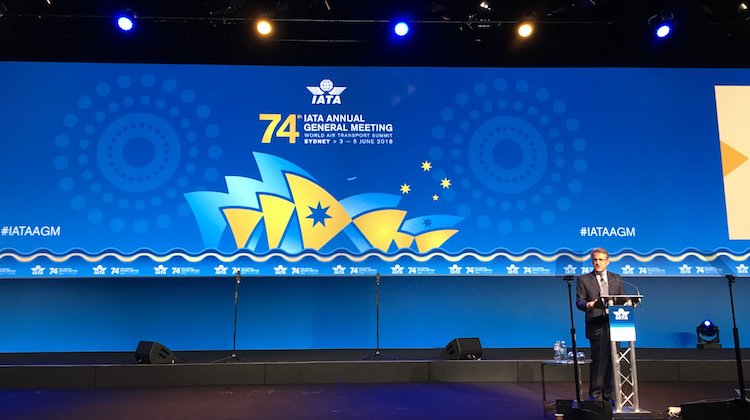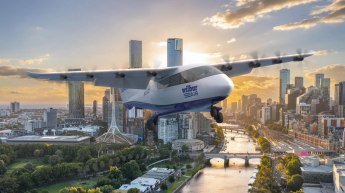
The International Air Transport Association (IATA) has lowered its profit forecasts for the airline industry for 2018 amid rising fuel prices and higher costs.
Airlines around the world are expected to collectively post a US$33.8 billion profit in calendar 2018, IATA director general and chief executive Alexandre de Juniac told delegates in his opening address to the IATA annual general meeting in Sydney on Monday.
This latest forecast is down from IATA’s January estimate for 2018 of US$38.4 billion, and also represents a decline from the US$38 billion in profits earned in the prior year.
“Solid profitability is holding up in 2018, despite rising costs,” de Juniac said.
“The industry’s financial foundations are strong with a nine-year run in the black that began in 2010 and the return on invested capital will exceed the cost of capital for a fourth consecutive year.
“At long last, normal profits are becoming normal for airlines.
“It is fair to say 2018 is a tougher. But the airlines are doing a good job, they are managing a changing environment.”

Not a big number
The estimated calendar 2018 total profit equated to an average profit of US$7.76 per passenger and an “thin” 4.2 per cent net margin.
“What we are saying is that we are happy to make margins and to have a return on invested capital that exceeds cost of capital, but 4.1 per cent, objectively, is not a big number,” de Juniac told media after his opening address.
“When you compare to other sectors, it’s not a big number.”
Qantas chief executive Alan Joyce said it wouldn’t take much for airline profitability to again be under pressure.
“It’s the impression out there that these are significant profits for the aviation industry as a whole but they are not,” Joyce told journalists at an IATA media briefing on Monday.
“A lot of other industries and a lot of other parts of the value chain that airlines deal with, whether that is aircraft manufacturing, travel agents, whether it is airports – and in particular we are pointing out tomorrow some numbers that airports are making – the profitability of those other sectors are way in excess of what airlines are getting.
“So these are thin margins, there is a lot of other profitability in the chain that we need to make sure it is shared fairly and customers are getting this benefit out of it.
Alexandre de Juniac speaks about the value of #IATAAGM for the industry – global leaders all in one place. #airlines https://t.co/Nft6pGMmTX pic.twitter.com/hoVaagyrQ1
— IATA (@IATA) June 3, 2018
Passenger demand strongest in Asia Pacific
IATA forecast growth in passenger demand, measured by revenue passenger kilometres, to increase by seven per cent in calendar 2018, while cargo demand, measured by revenue per tonne kilometres, would grow four per cent.
However, it said airlines were facing “significant pressures from rising fuel and labour costs” as inflation pressures started to emerge “at this late stage of the economic cycle”.
IATA said it expected the full year average cost of Brent Crude Oil to be about US$70 a barrel, compared with US$54.9 a barrel in 2017 and up from its previous estimate of US$60 a barrel.
Fuel would account for about 24 per cent of total operating costs in 2018, up from 21.4 per cent in 2017.
“Overall unit costs are forecast to rise 5.2 per cent this year, after a 1.2 per cent increase in 2017; a significant acceleration.”
The average return fare for 2018 was expected to be US$380, unchanged from the prior year and down 59 per cent compared with 1998, after adjusting for inflation.
“Consumers will see a substantial increase in the value they derive from air transport in 2018, including stability in what they pay airlines, after allowing for inflation,” IATA’s Economic Performance of the Airline Industry report said.
Among the regions, the Asia Pacific was expected to post the strongest growth in demand, with RPKs tipped to rise 9.5 per cent in calendar 2018, down from an increase of 10.9 per cent in the current year.
However, IATA said there was not one uniform experience among all carriers in the region.
“Airlines in Asia-Pacific have very diverse performances,” the IATA report said.
“Average profit per passenger next year is forecast at US$5.10 as high fuel costs are partly offset by improved cargo markets, particularly important in this manufacturing region, helping to keep net profits to US$8.2 billion and net margins at 3.2 per cent.”
Traditional Aboriginal dance opens World Air Transport Symposium in #Sydney #IATAAGM pic.twitter.com/ZTjtGVrRPB
— IATA (@IATA) June 3, 2018
In March, Cathay Pacific announced a net loss of HK$1.259 billion for the 12 months to December 31 2017, the first time the airline has posted a back-to-back annual loss since it was established in 1946. It cited fundamental structural changes within the airline industry, overcapacity in key markets, congestion in Hong Kong and China and higher fuel prices as factors in the result.
And in May, Singapore Airlines also raised the issue of higher fuel prices and sounded a note of caution in its outlook for the year ahead after announcing net profit for the 12 months to March 31 2018 of S$893 million, more than double the S$360 million in the prior financial year.
“Despite stronger advance passenger bookings for the coming months and a continued stabilisation in yields, intense competition in key operating markets and cost pressures remain,” SIA said.
“Fuel prices have been trending higher and volatility is expected to persist in the months ahead. The overall demand outlook for cargo remains moderately positive, but is subject to geopolitical uncertainties which may have implications on global trade.”
Locally, Qantas has forecast underlying profit before tax in the range of $1.55 billion and $1.6 billion for the 12 months to June 30 2018. If the result is in line with guidance, it would represent an improvement of up between 10 and 14 per cent from underlying PBT of $1.40 billion in 2016/17.
Virgin Australia has not provided the market with specific earnings guidance. In February, the airline said it was expecting the underlying performance for the second half of 2017/18 to improve compared with the prior corresponding period.
Check out @CNN @Richardquest review of the last year in aviation: profits and more passenger choice, but also change, headwinds…and headaches to come. #IATAAGM https://t.co/tjLoy5niQa pic.twitter.com/IsZwMC8F8A
— IATA (@IATA) June 3, 2018















